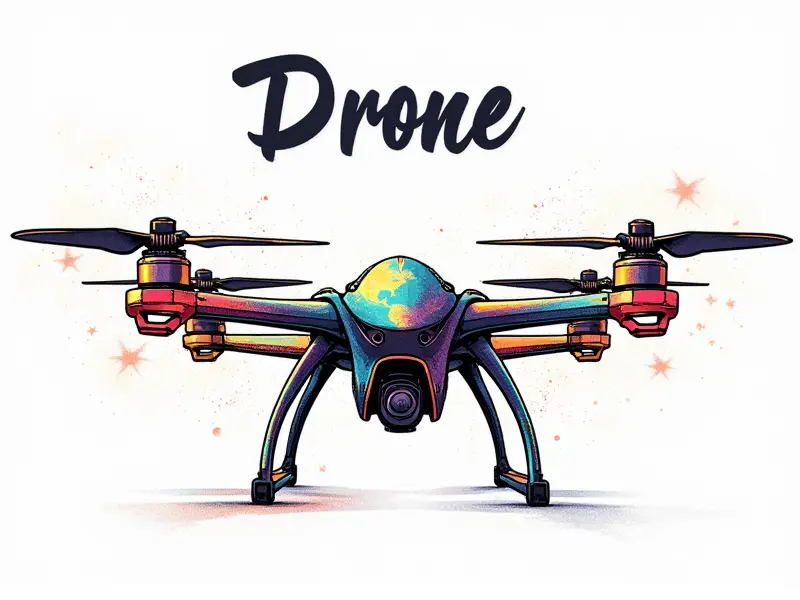FPV drone antenna types

Best FPV Drone Antennas Explained
When it comes to First Person View (FPV) drone racing and aerial photography, the quality of your video transmission is paramount. The heart of this system lies in the antennas used for both the transmitter on the drone and the receiver on the ground station or goggles. Understanding the different types of FPV drone antennas can significantly enhance your flight experience by providing clearer signals and extended range.
Choosing the Right FPV Drone Antenna
Selecting the appropriate antenna is crucial for achieving optimal performance in your FPV setup. The choice depends on several factors such as the type of flying you do (racing, freestyle, or long-range), the environment you fly in, and the distance you need to cover.
Types of Antennas
- Dipole Antenna: Ideal for short-range flights due to its omnidirectional pattern. It’s commonly used with 5.8GHz gear but can also be paired with other frequencies.
- Patch Antenna: Offers a directional beam that provides better range and clarity compared to dipole antennas, making it suitable for longer distances.
- Panel Antennas: These are highly directional and provide the best range but require precise alignment. They are commonly used in long-range FPV setups.
- Whip Antennas: Used for 900MHz gear, these offer a balance between range and ease of use, making them popular among beginners.
Understanding Polarization in FPV Antennas
Polarization plays a critical role in the effectiveness of your FPV signal. It refers to the orientation of the electromagnetic waves emitted by an antenna and how they interact with each other.
- Vertical Polarization: Commonly used for 5.8GHz gear, it offers better resistance against multipath interference caused by reflections off buildings or terrain.
- Horizontal Polarization: Used in some long-range setups to minimize interference from vertically polarized signals.
Top 5 FPV Antennas for Drones
The following are highly recommended antennas that cater to different needs and environments:
- DJI FPV Antenna: Known for its durability and performance, it’s a favorite among competitive racers.
- MJX RC 5.8GHz Patch Antenna: Offers excellent range and clarity, making it ideal for long-range flights.
- RacingRTR FPV Dipole Antenna: Provides omnidirectional coverage and is easy to install on various drones.
- TBS UniFi Nano VTX: Features a compact design with high gain, suitable for both racing and long-range applications.
- Wingtra One Patch Antenna: Designed specifically for professional surveying drones, offering superior range and reliability.
Maximize Range with Optimal FPV Antennas
To maximize the range of your FPV setup, consider using high-gain directional antennas like patch or panel types. Ensure that both transmitter and receiver are aligned properly to maintain a strong signal throughout the flight.
Tips for Maximizing Range
- Use high-quality coaxial cables with minimal loss.
- Position your drone’s antenna vertically if you’re using vertical polarization.
- Employ diversity antennas to reduce interference and improve signal stability.
DIY FPV Antennas for Racing Drones
Budget-conscious pilots often opt for building their own antennas. DIY options can be cost-effective while still providing excellent performance.
- Patch Antenna: Constructing a patch antenna involves soldering components and mounting it on the drone frame.
- Cloverleaf Antenna: A simple design that offers good range with minimal construction effort.
Boost Your Signal with Diversity Antennas
Diversity antennas use multiple receivers to capture signals from different angles, reducing the impact of multipath interference and improving overall signal quality.
- Two-Element Diversity: Uses two separate antennas for redundancy and better coverage.
- Four-Element Diversity: Provides superior performance in complex environments with high levels of interference.
Common FPV Antenna Mistakes to Avoid
Making mistakes can lead to poor signal quality or even complete loss of video feed during flights. Here are some common pitfalls to avoid:
- Inadequate Cabling: Using low-quality coaxial cables can result in significant signal loss.
- Poor Alignment: Misalignment between transmitter and receiver antennas reduces range and clarity.
- Incorrect Polarization: Mismatched polarization settings can severely degrade the video feed quality.
Understanding FPV Drone Antenna Patterns
The radiation pattern of an antenna determines its coverage area. Understanding these patterns helps in choosing the right antenna for your specific needs.
- Omnidirectional: Provides uniform signal strength in all directions, ideal for short-range flights.
- Directional: Concentrates signal strength in one direction, offering better range and clarity over longer distances.
FPV Drone Antenna Placement Tips
Proper placement of antennas is crucial to maintaining a strong and stable video feed. Here are some tips for optimal antenna positioning:
- Versatility: Place the transmitter on top of the drone’s frame to avoid interference from propellers.
- Stability: Securely mount antennas to prevent them from moving during flight, which can cause signal degradation.
Essential Guide to FPV Drone Antennas
In summary, selecting and configuring the right FPV drone antenna is essential for achieving optimal performance in your aerial adventures. By understanding the different types of antennas available, their polarization characteristics, and best practices for installation, you can significantly enhance your flight experience.
Conclusion
The choice of FPV drone antennas plays a pivotal role in determining the quality and range of video transmission during flights. Whether you're a seasoned racer or an enthusiast looking to explore long-range capabilities, investing time into understanding and selecting the right antenna can make all the difference.

